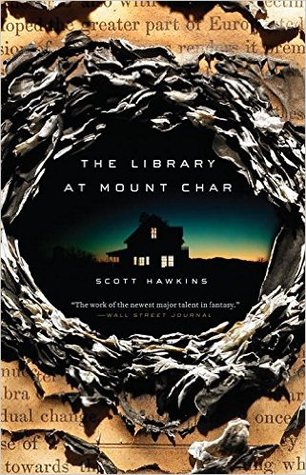You have just read a blog post written by Jason McIntosh.
If you wish, you can visit the rest of the blog, or subscribe to it via RSS. You can also find Jason on Twitter, or send him an email.
Thank you kindly for your time and attention today.

I began to think of this novel as Neil Gaiman’s Shitty Endless shortly after beginning to read it. It bore the tag proudly right through to the end. I rather liked it.
In the template epitomized by The Sandman but also seen in countless other fantasy sagas — my own first exposure being Piers Anthony’s Incarnations of Immortality, cheesy but thrilling to early-teen me — Hawkins’ novel presents us with a family whose members each represent, supernaturally, some universal concept or archetype. But where Gaiman’s pantheon stands for various aspects of the human condition, the Mount Char clan serve a monstrous higher power, existing on a plane above human concerns. While they walk among mortals, they live and fight unbound by human morality, with neither cognizance nor caring of how the human world works.
This makes for an entertainingly bananas introduction, and then the author rather completes the parody of The Sandman’s subtle and years-long tragic arc by irrevocably smashing its whole universe against the cliffs within a couple hundred pages — and then, somehow, piling the shattered mess into a pleasingly graceful ending.
One pseudo-parallel with Gaiman’s work stands out in particular, for me. A key plot point of The Sandman concerns Destruction, one of the “Endless” entities who, alongside Death, Dream, and others, embodies a core human experience. He spends most of the series mysteriously absent, his cosmic siblings having no clue where or why. They do find him, of course, making for an unexpectedly quiet and contemplative resolution to his thread before the whole series begins to wrap up.
Destruction’s analog in Mount Char is David, the “Pelapi” (a sort of omnipotent witch-librarian) of war and murder, in so many words. Where Destruction is a deeply introspective warrior gone AWOL, David is a batshit-bananas thrill-kill supersoldier who serves as the story’s most active antagonist, taking cues in both behavior and blood-drenched fashion sense from Johnny Ryan’s Prison Pit comics. He ends up shaping the path of the novel to a degree that I, with my prejudices, found a bit disorienting at first.
Once I surrendered to the fact that I was not, in fact, reading The Sandman, I found myself enjoying the ride, feeling free to let subtlety take a spear right in the eye socket. I suppose this book caught me in the mood to read something maximally violent and absurd, right now.
Context: I bought this book after one of my favorite SF authors recommended it, via Twitter, during a Kindle sale.
Next post: I drew a map to organize some cables, and then I organized the cables
Previous post: A letter to my mayor and his moustache about the climate
To share a response that links to this page from somewhere else on the web, paste its URL here.